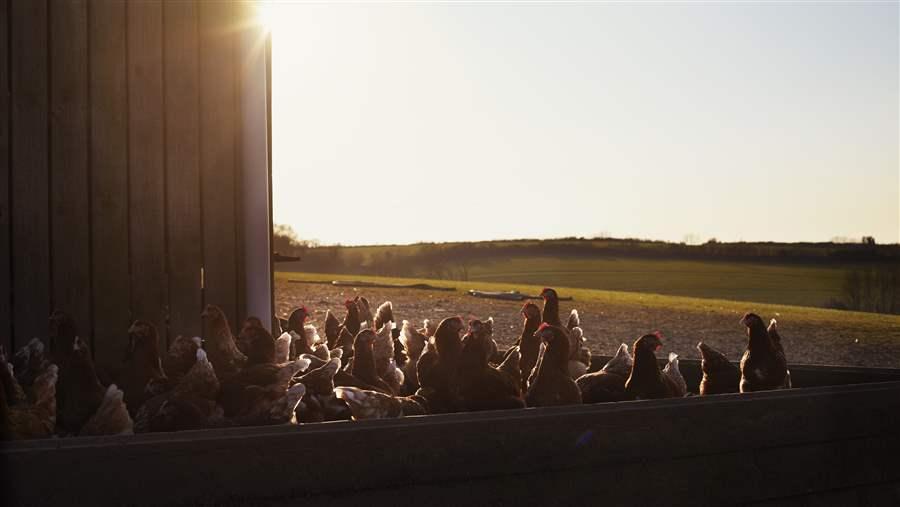Food Safety Starts on the Farm
New report finds foodborne illnesses are best combated by preventing contamination at every step

Americans continue to be sickened by meat and poultry products contaminated with harmful bacteria. Microorganisms in these foods cause an estimated 2 million illnesses in the United States each year. Infection rates for some major pathogens, such as Salmonella, have been essentially unchanged for decades.
Cattle, poultry, and swine can harbor harmful bacteria and bring them to the slaughterhouse, where the U.S. Department of Agriculture’s food safety inspectors get their first look. Contaminated animals may show no signs of infection, as pathogens that sicken humans do not necessarily harm these species. Therefore it can be very difficult to detect animals that harbor dangerous bacteria. By reducing animals’ exposure to pathogens on the farms and feedlots where they are bred and raised, the nation can better prevent foodborne illnesses and improve public health.
A new report by The Pew Charitable Trusts, “Food Safety From Farm to Fork,” explores a variety of measures that research has shown can reduce the risk that bacteria harmful to humans will be present on food animals at slaughter. These measures can range from ensuring that water and feed are clean to administering vaccines and other preventive treatments.
It’s important to remember that no single intervention will be entirely successful in combating all pathogens in all species; however, Pew’s report identified several key characteristics of effective pre-harvest programs. They combine multiple tactics to reduce the ability of the pathogen to develop ways to evade one particular intervention. Additionally, it is most helpful in many instances to start the interventions early, with the swine breeding herds and broiler chicken breeder flocks, and to rely on a variety of approaches such as feed safety, biosecurity, and surveillance for pathogens as well as vaccines and other products.
Foodborne diseases can have severe and sometimes lifelong consequences for victims and impose substantial health care costs, with estimates reaching nearly $5.8 billion a year for cases linked to poultry, pork, and beef. Businesses also face economic burdens and risks from tainted food.
Tactics to reduce pathogenic contamination in poultry, swine, and cattle are in use to some degree on farms and feedlots across the U.S. There are several ways to develop and increase adoption of these strategies. They include:
- Study the basic science, supplementary benefits, and potential unintended consequences associated with poorly understood yet promising interventions such as prebiotics and probiotics, and evaluate their cost-effectiveness.
- Ensure the safety of feed and water on farms and feedlots as part of managing the health of the herd or flock to protect the health of the animals and keep harmful pathogens out.
- Develop online resources to encourage sharing of valuable safety data among industry, academia, governmental researchers, and regulatory agencies to ensure that all parties receive the latest research and information.
By incorporating farm- and feedlot-based interventions into the foodborne illness prevention strategy, companies can minimize contamination before animals reach slaughter. Ultimately, fewer people will be sickened by pathogens in meat and poultry products.
Sandra Eskin directs The Pew Charitable Trusts’ work on food safety. Karin Hoelzer, a veterinarian by training, works on The Pew Charitable Trusts’ safe food and antibiotic resistance projects.








